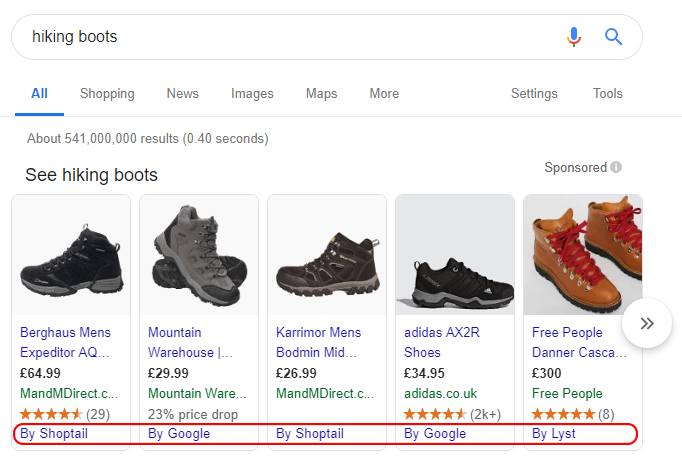SEO Tips for E-commerce: Improve Your Online Shop's Ranking in Google
SEO is an important tool for e-commerce businesses to bring in new customers. Here are the best tips for your online shop to rank higher in Google.

In this article, you'll learn what Google CSS is, the benefits it offers, and why you need to use it in order to stay competitive as an online shop.
CSS stands for Google's "Comparison Shopping Service" partner. The reason Google launched this service is because of a €2.4 billion fine imposed by the EU on Google in 2017.
You can read about the verdict here.
According to the EU, Google has exploited its market power and thereby massively disadvantaged its competition.
The argumentation of the EU is that users tend to click on the visual images shown in the search results and the price comparisons are only listed on pages 2 and 3. As a result, those shops received less than 1% of the clicks.
As a result of this, Google has founded a virtual company within Google: Google Shopping Europe (GSE).
The aim of GSE is to give price comparisons sites and product search engines the same conditions as Google Shopping on the search results page and to strengthen external price comparisons.
At the end of September 2017, shortly before the EU Commission’s 90-day deadline expired, Google announced that it would economically break up its "Google Shopping" service (google.com/shopping), which had previously been integrated into the Google search engine.
Google's price comparison service has since been working as an independent company (GSE) and must buy the ad spaces on the search result pages from their parent company, Google.
Therefore, GSE is in competition with other companies: the so-called "Comparison Shopping Services" (CSS). In order to make competition possible, Google gave the competition a considerable discount on the click-prices on Google Shopping ads.
In addition to Google, other providers are now appearing in the shopping results on the search results page:

Source: Google
Not only is the legal situation of CSS very complex, but also how it works in practice. In simple terms, the point is that CSS providers (i.e. price comparison sites) participate with higher virtual bids in the auction than shops that continue to book via Google Shopping. The difference is said to be up to 20%.
This 20% is, in principle, the margin that you save as a shop operator with the same ad rank via Google Shopping.
If a shop indicates a bid of €1.00 per click, it virtually goes to the auction with €1.20 (or the €1.00 CPC is discounted accordingly). To put it another way, the shop would pay 20% less than their competitors that make their bids via the standard way with Google Shopping.
What would happen if all merchants use an external CSS?
With this noteworthy discount, a lot of shop owners will do their best to take advantage of this opportunity so there will be a lot of competition after some time. This will probably result in CPC levels evening out.

Shutterstock/Fonstra
When using a CSS, it's important to note that €1000 of ad spend prices will not automatically become €800.
The bid through a CSS provider has a different value in the auction. At the same time, the (virtually) higher bid ensures that the shop can participate in more and more expensive (and probably promising) auctions. The result is usually more impressions for your site.
The use of CSS also means that bid management becomes more complex. It would probably be a good decision to put more effort into optimising your shopping feed and perhaps even get professional help (or a special software to assist you).
In theory, you could use a variety of CSS partners and try to bid on your ads with all of them. Since they are all technically identical and have the same prerequisites, this wouldn’t be very effective and would only increase your administrative work.
A "2-account strategy", in which CSS and Google Shopping were used in parallel so that retargeting would continue to work, has also become obsolete. There are no more restrictions here.
It should be noted that after a changeover to an external CSS, your Google contact no longer has direct access to your account. However, there is now also a technical solution here: With a so-called "waiver", this access is reactivated again.
An overview of all CSS premium partners listed with Google can be found here.
The premium partners listed by Google have some advantages. For example, they include quarterly business reviews, specialty workshops, consultative support for top merchants, conversion tracking.
The solution provided by the EU is a nice idea in order to limit Google’s market power.
Although it is unlikely to change the actual click-prices in the long run, the changes mean that you, as a shop owner, can only participate in auctions competitively if you use a CSS solution.
15/04/19SEO is an important tool for e-commerce businesses to bring in new customers. Here are the best tips for your online shop to rank higher in Google.
Valentine's Day has grown in popularity across Europe. We're sharing some romantic statistics (redundant, right?) and look at 9 marketing tips for V-day.